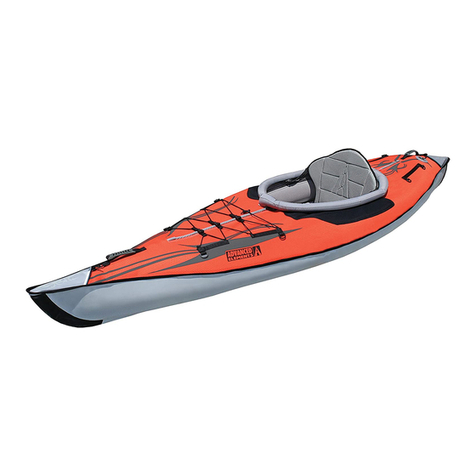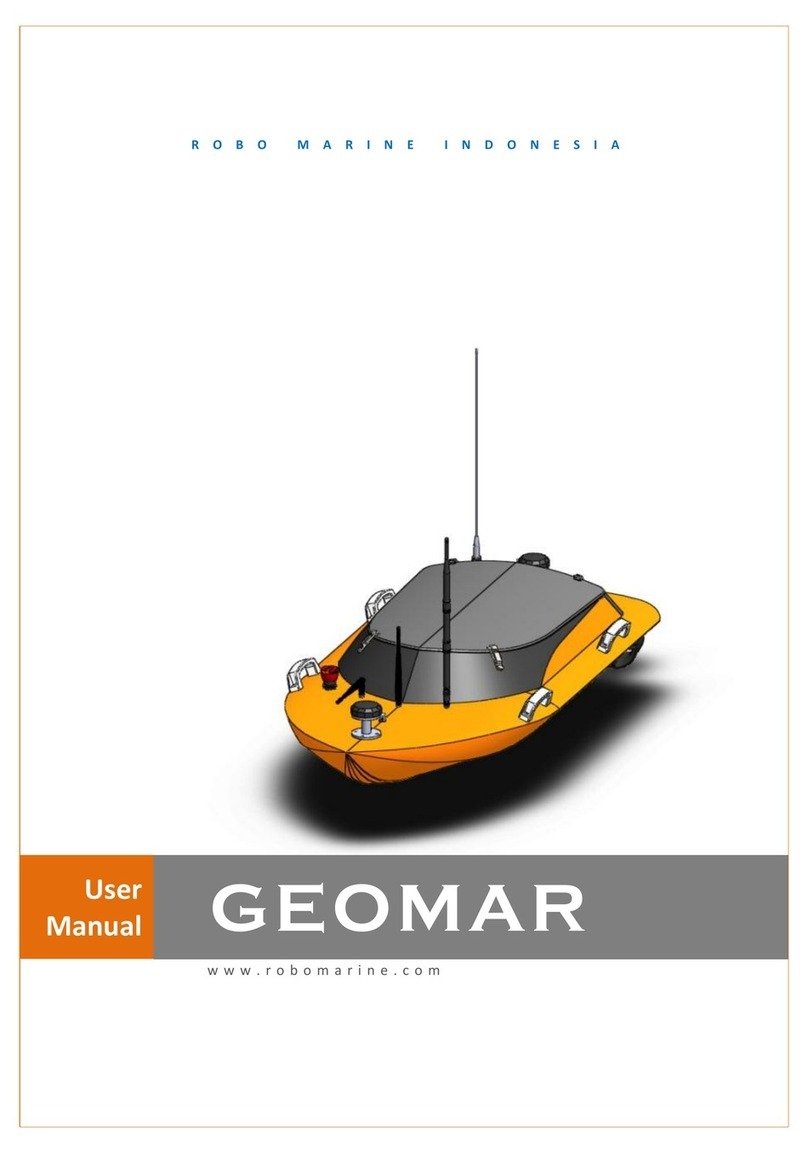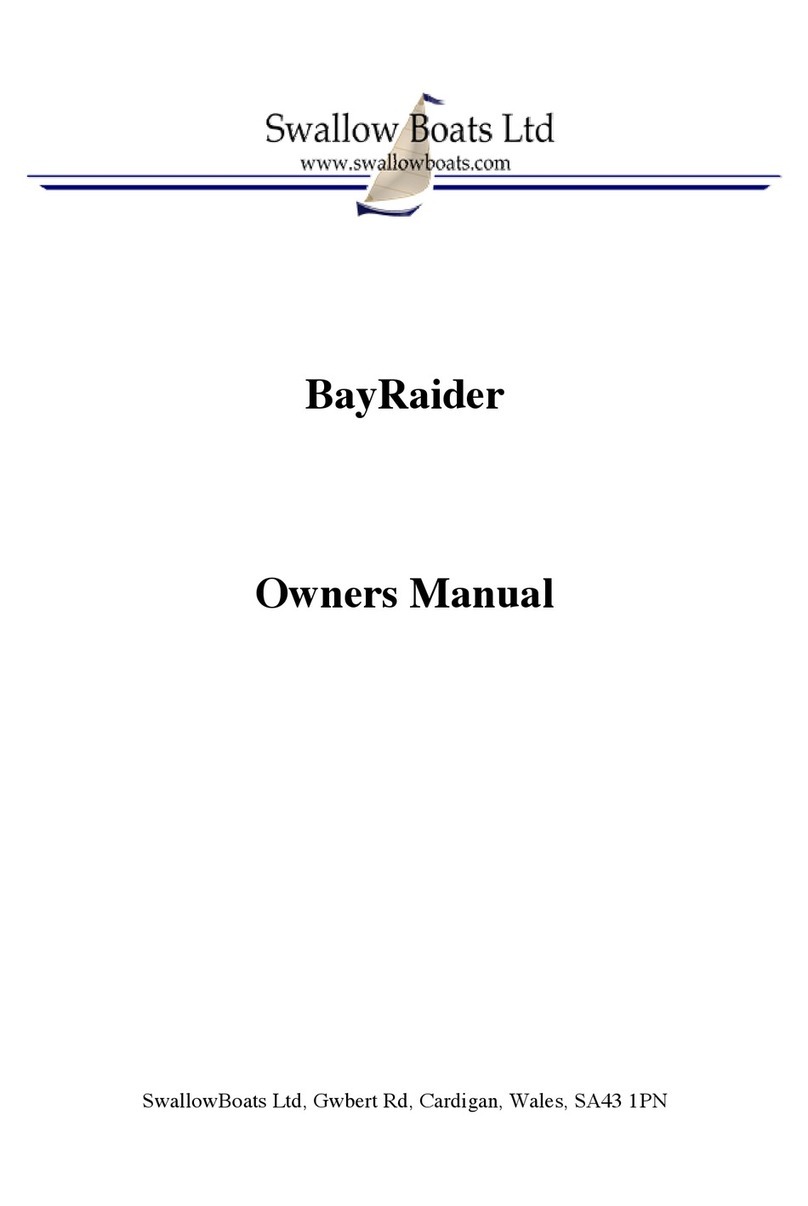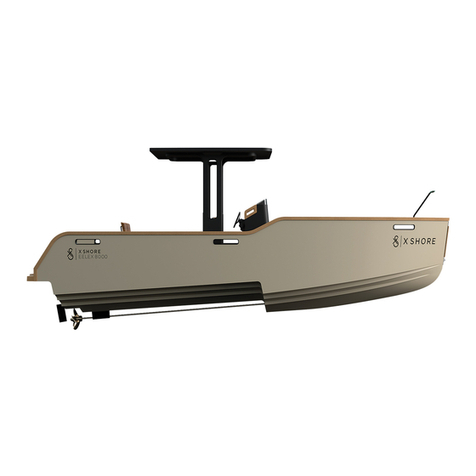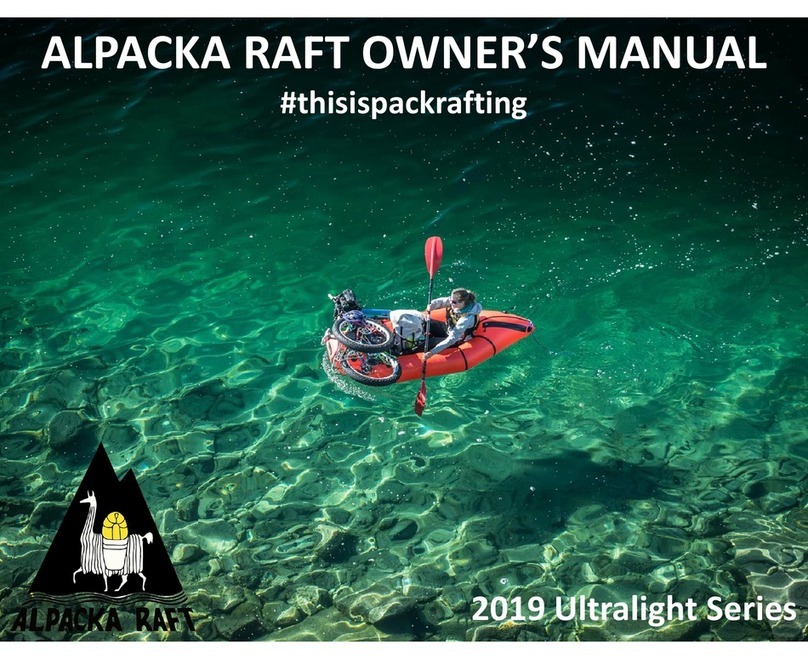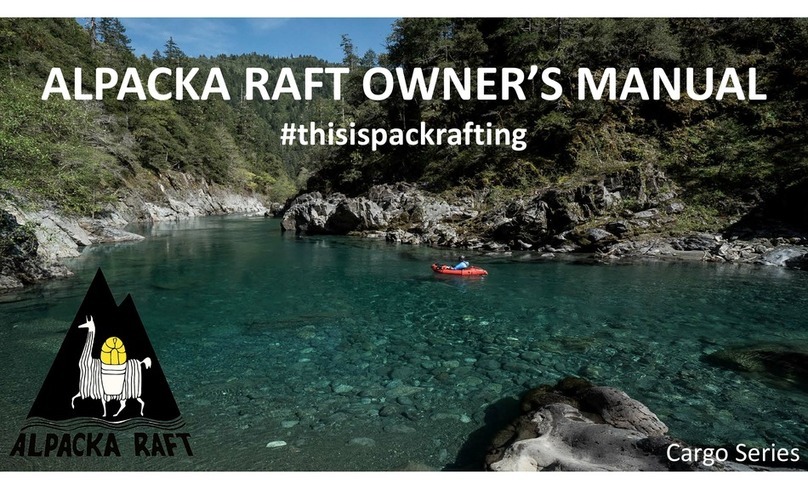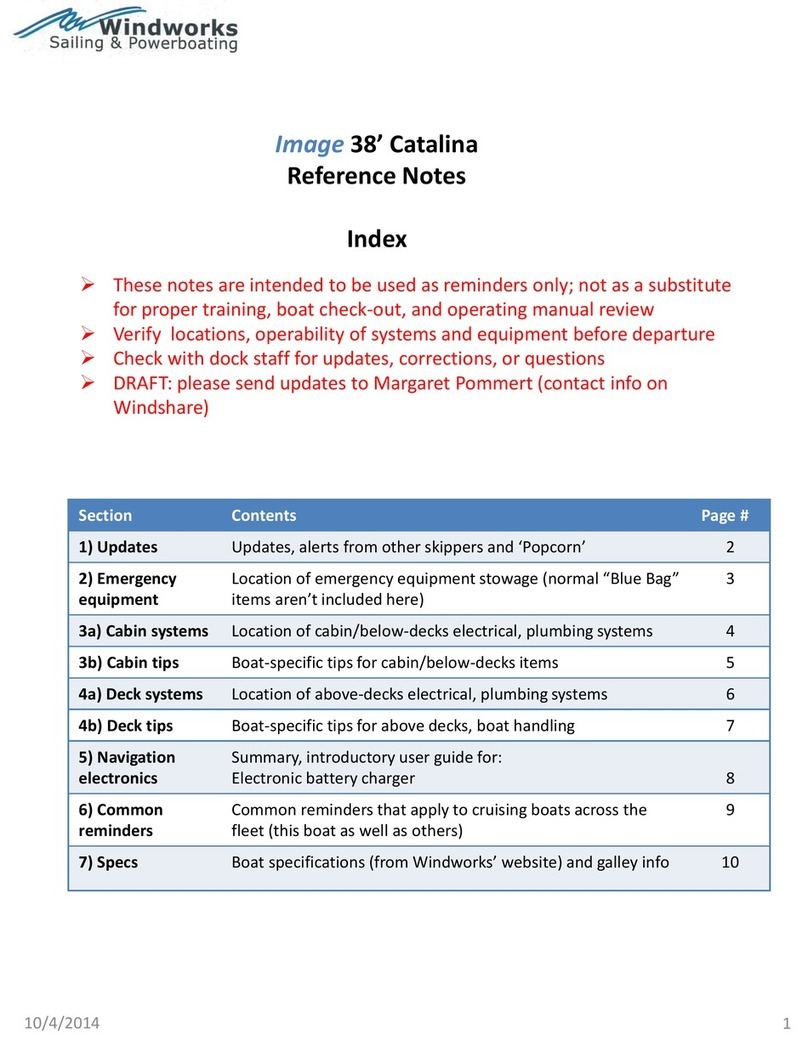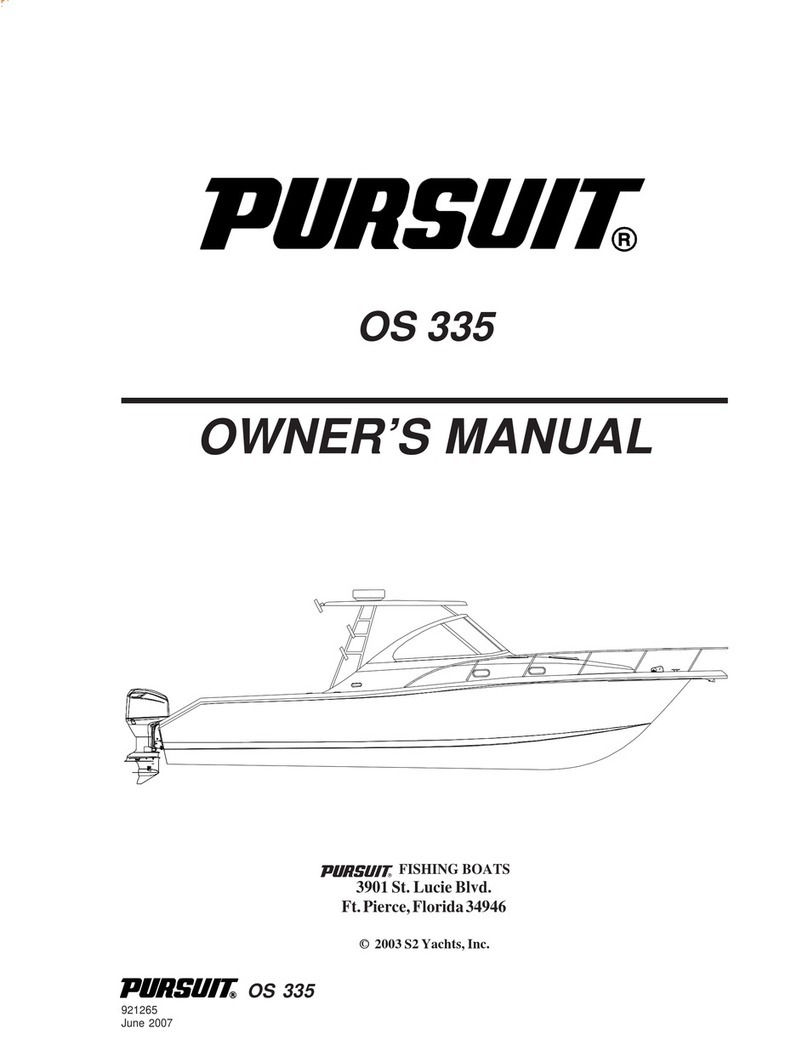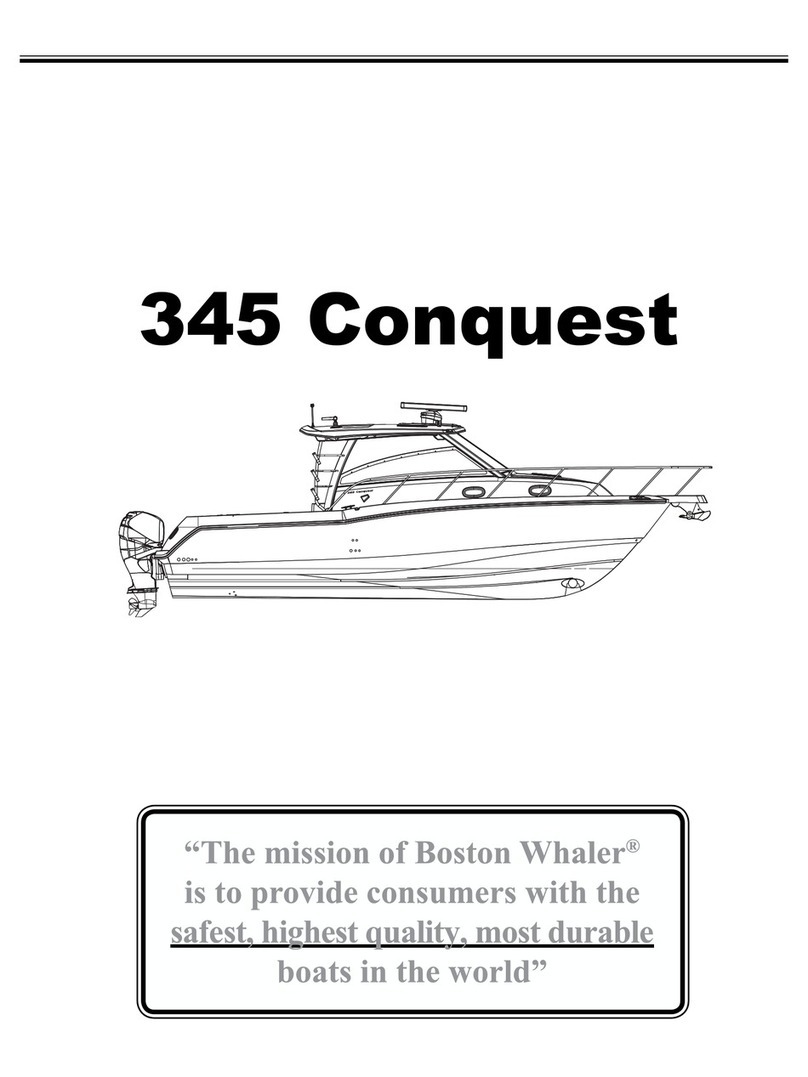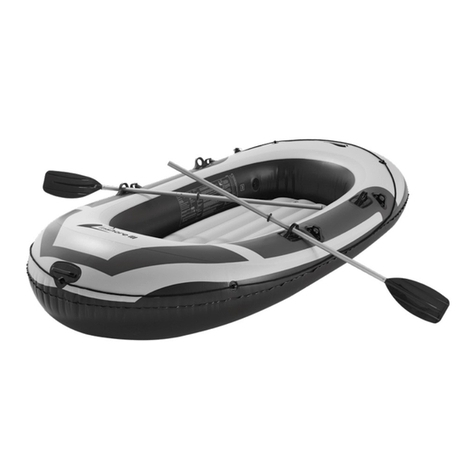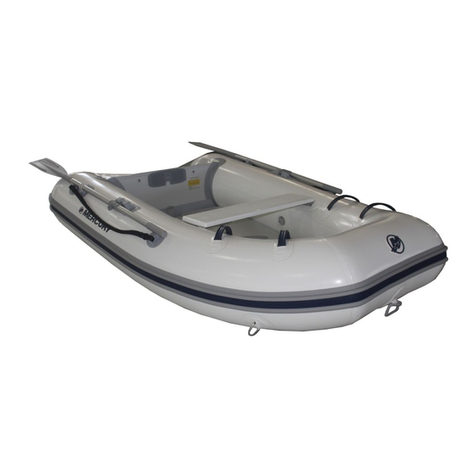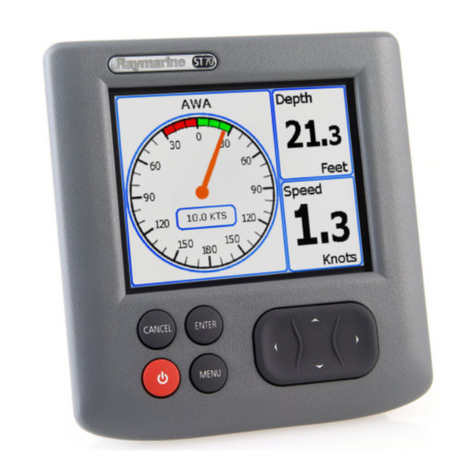CARGO FLY SETUP/CARE/MAINTENANCE
9
For additional information, see the Cargo Fly Care Instructions available at www.alpackaraft.com
Overview -The Cargo Fly is the
ultimate packraft gear storage
solution.The three piece
system utilizes an airtight and
watertight zipper installed in
the stern of the boat together
with two gear storage dry bags
which are clipped in place along
the inside of the raft tubes. The
system provides drier and more
secure gear storage, improved
paddling performance due to a
lower center of gravity, quicker
transitions from packrafting to
hiking, and the internal dry bags
act as additional balanced air
chambers for increased safety
(even over atwo-chamber
packraft) in the event of a
puncture.
Internal Dry Bags -The Cargo Fly
system includes two internal dry
bags:
•Ultralight Dry Bags – Included
standard on all Alpacka and
Cargo Series models and
optional on Whitewater Series
models. Feature a standard
roll-top style closure.Weight
9oz/pair.
•Standard Dry Bags – Included
standard on all Whitewater
Series models and optional on
all others.Feature an airtight
zipper closure and inflation
tube to act as additional air
chambers. Weight 18oz/pair.
Installation –Both ultralight and
standard dry bags (except Forager) can
be secured inside the side tubes with the
included 3/4-inch quick release buckles.
On initial setup, the male buckle will
need to be threaded onto the 3/4-inch
webbing tab installed about half way
down the side of each tube.
Packing – Internal dry bags should be
evenly weighted to balance the load on
either side of the packraft. Heavier items
can be packed towards the bow or stern
depending on the paddler’s preference.
Note –All hard and sharp items (pots,
fuel canisters, stoves, etc.) should be
packed in a padded case or wrapped in
clothing and placed to the top and inside
of the internal dry bags to prevent pinch
flatting your packraft in shallow rivers.
Care &Maintenance -Follow these simple steps
to keep your Cargo Fly TiZip SuperSeal® zipper in
good repair:
•Keep the zipper lubricated! Lubricate the
entire length of the zipper before the first
use, before and after any multi-day trip, and
anytime the zipper feels sticky or difficult to
move. Clean excess lubricant off with acloth.
•Keep the zipper clean and free of dirt and
sand in the field.Load and unload your boat
in the field in aclean area and keep your
zipper closed when not in use. Clean sand
and dirt contamination with asmall brush
and or by blowing on the area to prevent the
zipper from separating.
•Dry your zipper after every trip.Allow your
boat to dry with the zipper open after every
trip. The coating on the zipper can degrade if
stored damp, which will cause the zipper to
leak.


